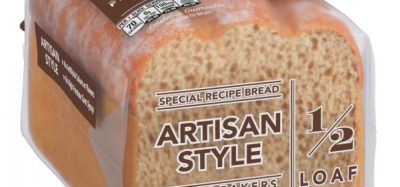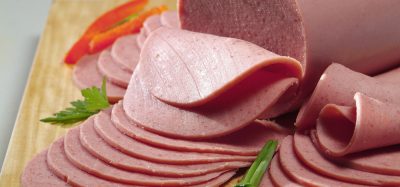Effects of packaging on dairy products
- Like
- Digg
- Del
- Tumblr
- VKontakte
- Buffer
- Love This
- Odnoklassniki
- Meneame
- Blogger
- Amazon
- Yahoo Mail
- Gmail
- AOL
- Newsvine
- HackerNews
- Evernote
- MySpace
- Mail.ru
- Viadeo
- Line
- Comments
- Yummly
- SMS
- Viber
- Telegram
- Subscribe
- Skype
- Facebook Messenger
- Kakao
- LiveJournal
- Yammer
- Edgar
- Fintel
- Mix
- Instapaper
- Copy Link
Posted: 31 January 2005 | Grith Mortensen, Torben L. Friis and Henrik Skou Pedersen, Arla Foods, Innovation Center Brabrand, Denmark | No comments yet
Many food producers underestimate the effects of packaging on quality deterioration. In order to preserve product quality, it is of paramount importance to thoroughly understand and focus on the interactions taking place between the packaging and the product. It is only by applying this knowledge to tailor packaging to individual product types that producers will secure, or even boost, their cutting edge positions.
At present, choices of packaging materials and methods are primarily based on practical experience and/or empirical methods. However, it is crucial to commercial viability to focus R&D activity on interactions between packaging, the surrounding headspace and the product. Different foods call for different packaging concepts, hence in-depth knowledge is required about the most important quality changes taking place in the various products, in order to individually tailor the packaging solutions. Figure 1 reviews how packaging and storage can affect product quality. Due to the dynamic interplay between product, packaging and its surroundings, it is vitally important to incorporate both packaging and product expertise from the beginning of the R&D process.
Many food producers underestimate the effects of packaging on quality deterioration. In order to preserve product quality, it is of paramount importance to thoroughly understand and focus on the interactions taking place between the packaging and the product. It is only by applying this knowledge to tailor packaging to individual product types that producers will secure, or even boost, their cutting edge positions. At present, choices of packaging materials and methods are primarily based on practical experience and/or empirical methods. However, it is crucial to commercial viability to focus R&D activity on interactions between packaging, the surrounding headspace and the product. Different foods call for different packaging concepts, hence in-depth knowledge is required about the most important quality changes taking place in the various products, in order to individually tailor the packaging solutions. Figure 1 reviews how packaging and storage can affect product quality. Due to the dynamic interplay between product, packaging and its surroundings, it is vitally important to incorporate both packaging and product expertise from the beginning of the R&D process.
Many food producers underestimate the effects of packaging on quality deterioration. In order to preserve product quality, it is of paramount importance to thoroughly understand and focus on the interactions taking place between the packaging and the product. It is only by applying this knowledge to tailor packaging to individual product types that producers will secure, or even boost, their cutting edge positions.
At present, choices of packaging materials and methods are primarily based on practical experience and/or empirical methods. However, it is crucial to commercial viability to focus R&D activity on interactions between packaging, the surrounding headspace and the product. Different foods call for different packaging concepts, hence in-depth knowledge is required about the most important quality changes taking place in the various products, in order to individually tailor the packaging solutions. Figure 1 reviews how packaging and storage can affect product quality. Due to the dynamic interplay between product, packaging and its surroundings, it is vitally important to incorporate both packaging and product expertise from the beginning of the R&D process.
Innovation at Arla Foods
Arla Foods is the largest producer of dairy products in Europe (Box 1).
The Innovation department at Arla Foods carries out basic research, applied research, technology research and finally product development. In addition to this, the employees function as ‘interpreters’ between the strictly academic world (basic science and applied science) and the marketing department (Figure 2).
The mission of Arla Foods Innovation is to develop milk-based food products by means of research and technology, in order that modern consumers can feel confident, inspired and healthy. This mission also affects the R&D focus of packaging.
Packaging development in a major dairy company is a multifaceted task (Figure 3) which, in the case of Arla Foods, has been divided into daily assignments such as the implementation of new packaging designs and purchasing of packaging materials, which are performed by the production-related units and product development and competence developing projects, which are carried out by the Innovation department.
Hence, Arla Foods strives to meet the many demands on packaging imposed by the product itself as well as production, marketing, logistics, retailers, consumers and official authorities.
The main focus areas are the interactions between the product and packaging. The following considerations are specific to dairy products:
- Protective atmosphere packaging
- Effect of light exposure
- Emerging technologies
Protective atmosphere packaging
Protective atmosphere packaging (also known as modified atmosphere packaging, MAP) is applied to many cheese products to extend product shelf life and distribution radius. The field requires extensive knowledge about product/packaging interactions, which are briefly outlined in Figure 4. Arla Foods Innovation has established a database where practical knowledge and results of the more scientific studies are gathered. Research is continually carried out in collaboration with universities and other knowledge centres and the knowledge obtained is rapidly transferred to dairy plant management and product development personnel.
The focus areas include:
- Product respiration as a function of product type, temperature, relative humidity, packing gas composition and package design
- The physical environment’s influence on the protective barrier properties of the packages during distribution and sale
Effect of light exposure
Dairy products exposed to light from both natural and artificial sources throughout processing, packaging, distribution and at retailers, are likely to undergo photooxidation. Light exposure causes formation of off-flavours as well as colour changes, which rapidly impair product quality and marketability. This will in turn result in decreased sales appeal. Furthermore, these changes may be accompanied by loss of nutritional value.
Arla Foods takes these challenges seriously and focuses on preventing such light-induced quality deterioration by, for example, optimising product, packaging and storage-related parameters.
Arla Foods also carries out ongoing studies into the effect of packaging and storage parameters on well-defined dairy products, to obtain information on how proper packaging can actually prevent chemical and sensory quality changes in the product.
The focus areas include:
- A standardised method for evaluation of light-induced changes
- Information on light exposure parameters in relation to the retail sector
- Total packaging solutions, taking into consideration aspects such as product composition, distribution and the packaging material itself
- Measures aimed at reducing light exposure during distribution
- New packaging materials offering protection against light-induced quality changes
- Basic understanding of the underlying photochemical reactions and how these are measured, evaluated and correlated to ‘real-life’ applications
Research and development is not only carried out at Arla Foods, but also in collaboration projects with industry partners, academia and other research institutions.
An example of a product development assignment could be a request for replacing an existing package for butter spreads (in this case the ‘combi cup’) with a less expensive polypropylene cup. In this instance the main functions of the package are mechanical stability and protection against light exposure and water loss. Furthermore, the materials must be unaffected by the high fat content. Both materials provide mechanical stability and acceptable water and fat barriers. However, light transmission measurements (Figure 5) reveal that the ‘combi cup’ provides better light protection in the critical range, (around 450nm) than the polypropylene cup. Based on the above findings, it is recommended that the use of the ‘combi cup’ be continued in order to ensure optimal product quality.
Emerging technologies
Emerging technologies include, but are not limited to, smart and intelligent packaging. On-going efforts are centred on evaluating new features that can ensure safe foods; excite the consumers; brand the products; ease distribution and save costs.
The Packaging Vision 2010 (Figure 6) has been used as a starting point for discussions on how these features can be included in future packaging concepts for dairy products. As a result of these discussions, a project has been initiated to investigate these novel technologies.
The research into novel packaging materials and methods is a multifaceted task, which optimally includes several groups of experts, some of which are listed in Figure 7. Including the entire group of experts ensures new value-added products that will warrant market viability in an extremely competitive world.
















Issue
Related topics
Packaging & Labelling, Quality analysis & quality control (QA/QC)









